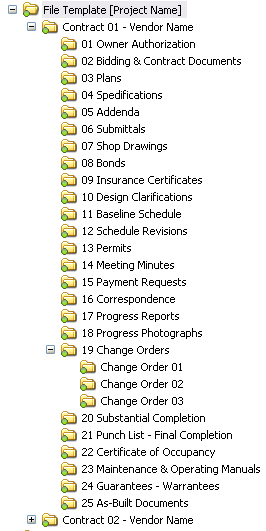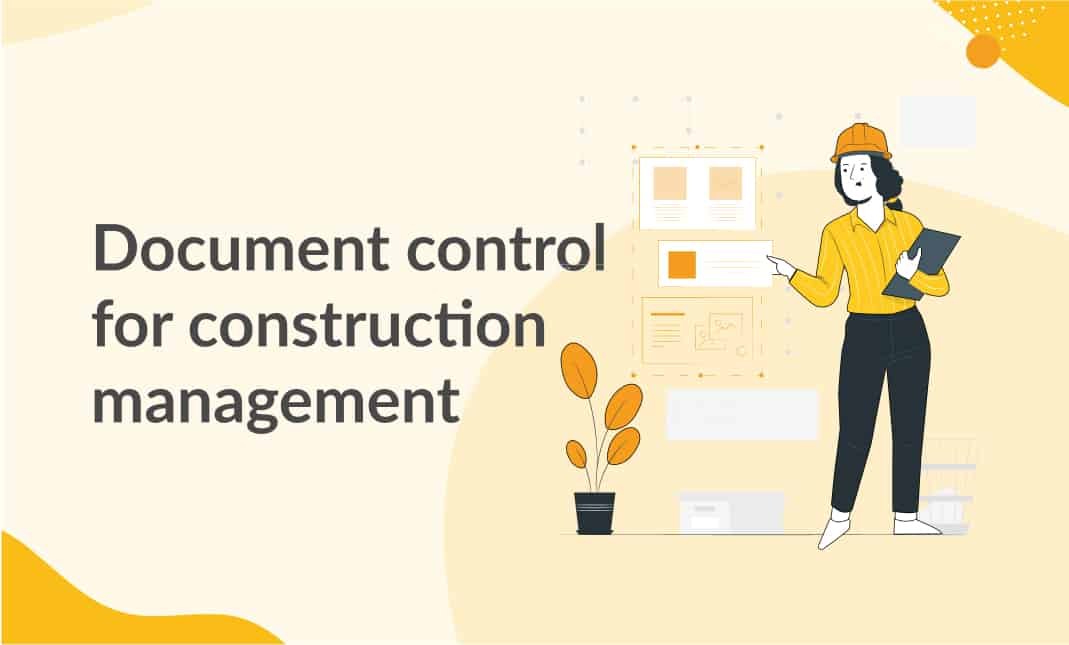Building Better Projects: The Duty of Construction Document Management in Success
Building Better Projects: The Duty of Construction Document Management in Success
Blog Article
Enhancing Process Performance: Engineer's Expert Methods for Building Record Management
In the realm of architectural layout and building and construction, the careful monitoring of papers stands as a keystone for project success. These strategies not only make certain smooth job progression however also hold the vital to opening enhanced efficiency and accuracy in the elaborate world of building and construction paper monitoring.
Secret Record Organization Techniques
When taking care of construction documents, among the essential methods that architects employ is developing a systematic and efficient company system. This system generally includes classifying files based upon their kind, such as drawings, specifications, agreements, and allows. By developing clear and unique categories, architects can promptly locate particular details when required, conserving time and minimizing errors in the construction process.
Within each category, architects even more organize documents by making use of or producing subfolders numbering systems to represent modifications or variations (construction document management). This hierarchical framework makes sure that one of the most pertinent and present info is quickly available while maintaining a document of changes made throughout the job timeline
Additionally, engineers typically make use of electronic file administration systems that supply functions like keyword search functions, version control, and gain access to constraints to improve organization and partnership among job stakeholders. These tools improve the paper access process, advertise real-time updates, and promote seamless communication, inevitably adding to the general success of the construction task.
Collaborative Platform Assimilation
To enhance document management performance in building projects, engineers perfectly integrate collaborative systems to enhance communication and simplify coordination amongst task stakeholders. By leveraging collaborative systems such as job monitoring software application, cloud-based storage systems, and communication devices, architects can produce a centralized hub for all project-related records and communication channels. These platforms allow group members to accessibility, evaluation, and collaborate on papers in real-time, decreasing hold-ups and the risk of errors connected with traditional paper administration methods.
Collaborative platform integration additionally fosters transparency and responsibility within the task group, as all stakeholders have presence into the most up to date project updates and revisions. By streamlining communication and paper sharing, designers can make sure that all employee are functioning from one of the most up-to-date details, reducing the opportunities of misconceptions or conflicts developing because of outdated records.
Furthermore, collaborative platforms enable seamless cooperation between architects, contractors, customers, and other project stakeholders, promoting an extra cohesive and efficient project process. By damaging down communication barriers and helping with information exchange, architects can drive performance and technology in building jobs, eventually causing effective project end results.
Variation Control Best Practices
Applying reliable version control techniques is essential for maintaining paper precision and consistency in construction jobs. By developing a clear system for handling revisions, job teams can make certain that everybody is working from one of the most updated documentation, reducing the risk of mistakes and inconsistencies throughout the building stage.
One of the key best techniques for version control is to appoint special identifiers to each document version. This can be accomplished by utilizing a numbering system or day stamp that clearly indicates the order of revisions. By plainly identifying each version, group members can easily track the progression of the file and recognize one of the most current version.

Automation Devices for Performance

Paper control software program, like Procore or PlanGrid, centralizes task documentation, making it easily available to all stakeholders. These systems permit real-time cooperation, version control, and automated backups, protecting against data loss. Furthermore, Structure Details Modeling (BIM) software automates the generation of building illustrations and makes certain that changes are integrated across all associated files.
Incorporating automation tools with cloud storage space remedies even more improves ease of access and protection. By automating the document monitoring procedure, job teams can concentrate their effort and time on value-adding tasks, inevitably improving performance and job outcomes.
Secure Information Management Solutions
Efficiently taking care of and guarding task information is critical in the construction industry to make sure privacy and honesty throughout the task lifecycle. Architectural companies can make use of encrypted cloud storage space solutions to safely keep and share task records with licensed personnel.
In addition, utilizing electronic rights administration (DRM) tools includes an extra layer of security by preventing the unapproved circulation or replication of task records. Normal data back-ups are necessary to mitigate the threat of information loss as a result of unanticipated scenarios like hardware failings or cyber-attacks. Collective platforms with integrated safety internet and security features make it possible for seamless interaction and data sharing amongst job team participants while preserving data stability.
Conclusion
To conclude, implementing crucial record company strategies, integrating collective platforms, practicing variation control best methods, making use of automation tools, and taking on protected information administration solutions are crucial strategies for improving process performance in building paper monitoring. These experienced techniques can improve procedures, improve communication, make certain precision, and keep data safety and security throughout the building project lifecycle.
In the realm of architectural style and building and construction, the precise management of records stands as a cornerstone for job success. These techniques not only make sure smooth project progression but likewise hold the key to opening boosted performance and accuracy in the intricate world of building document monitoring.
To official source enhance file management performance in building tasks, designers effortlessly incorporate collective platforms to enhance interaction and enhance control amongst project stakeholders. These platforms enable team participants to access, testimonial, and team up on documents in real-time, lowering delays and the threat of errors connected with typical record management approaches.
Making use of automation devices in building and construction file management dramatically improves performance and enhances processes for job groups. construction document management.
Report this page